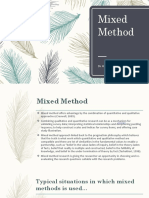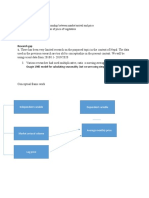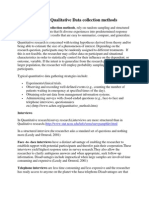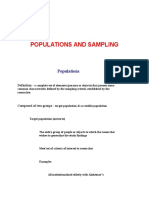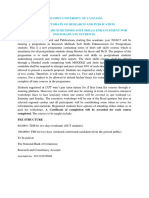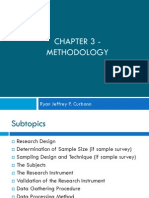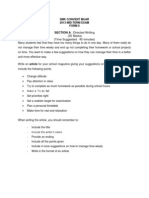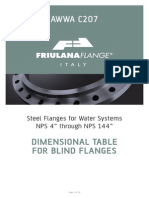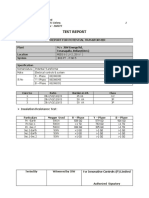Mixed Methods Approach
Associate Professor Dr. Mohd Sallehhudin Abd Aziz
drsallehhudin@gmail.com
�Approaches to Research
Research
Quantitative
Qualitative
Mixed Methods
�Quantitative research
A type of research which the researcher decides what to study :asks specific questions; collects quantifiable data from participants ;analyze these numbers using statistics and conducts inquiry in unbiased objective manner
�Types of quantitative research
Descriptive Experimental/Quasi Experimental Correlational
�Qualitative research
A type of research in which the researcher relies on the views of participants asks broad general questions; collects data consisting largely words from participant, describes these words for themes and conducts the inquiry in subjective , biased manner
�Types of Qualitative research
Interviews Observations Documents
�Mixed Method
Mixed methods procedures employ aspects of both Quantitative and Qualitative procedures
�Types of Mixed Methods Approach
Sequential Concurrent Transformative
�Definition
A mixed method approach is one in which the researcher collects, analyzes, and integrates both quantitative and qualitative data in a single study or in multiple studies in a sustained program of inquiry (Creswell 2003)
�Mixed methods research methods
Both predetermined and emerging methods Both open ended and closed-ended questions Multiple forms of data drawing on all possibilities Statistical and text analysis
�The situation today is less qualitative versus quantitative more how research practices lie somewhere on a continuum
�A research continuum
qualitative
quantitative
�Characteristics of Quantitative/Qualitative research
Quantitative Approach Sample size:n Measurable Qualitative Approach Sample size is not a concern Interpretive
Report Statistical Analysis
Report rich narrative
�Characteristics of Quantitative/Qualitative research
Basic element of analysis is numbers Basic element of analysis is words
Researcher is separate Researcher is part of process Subjects Participants
Hypotheses
Research questions
�Which approach to adopt?
The research problem The researcher The audience
�Why use mixed methods?
Validity to corroborate Quan and Qual data Offset offset weaknesses of Quan and Qual and draw on strengths Completeness more comprehensive account that Qual or Quan alone Process Quan provides outcomes; Qual, the processes
�Why use mixed methods?
Explanation Qual can explain Quan results or vice-versa Instrument development Qual employed to design instrument Credibility both approaches enhance integrity of findings
�Why use mixed methods?
You want the strength of multiple methods triangulation Rigorous mixed methods studies provide the opportunity to efficiently generate greater understanding answer a broader and more complete range of questions Use the strengths of an additional method to overcome the weakness in another
�Weaknesses
More complex Resource intensive Time intensive Complexity in relation to data collection and analysis
�Strategies of enquiries
Quantitative Qualitative Mixed Methods
Experimental Designs Descriptive Correlational
Ethnographies Case Studies Narratives
Sequential Concurrent Transformative
�Mixed Methods: Concurrent
Concurrent Mixed Method Design is a design in which both Qualitative and Quantitative data area collected and analyzed to answer the research questions (Qualitative and Quantitative)
�Mixed Methods: Concurrent
CONCURRENT Equal Dominant Qualitative + Quantitative QUALITATIVE + quantitative QUANTITATIVE + quantitative
�Concurrent mixed model design
Multi strand mixed design in which they are two relatively independent strands/phases: one with QUAL questions and data collection and analysis techniques and the other with QUAN questions and data collection and analysis techniques
�Concurrent mixed method design
A multi strand design in which both QUAL and QUAN data are collected and analyzed to answer a single type research question (QUAL or QUAN)
�Mixed Methods: SEQUENTIAL
SEQUENTIAL
Equal
QUAN
QUAL
Dominant
QUAN QUAL
qual quan
�SEQUENTIAL
Sequential mixed method is a design in which one type of data (e.g. QUAN) provides a basis for the collection of another type of data (e.g. QUAL) It answers one type of question (Qual or Quan) by collecting and analyzing two types of data (QUAL or QUAN)
�DIFFERENCES
�Procedures/Instruments
Quantitative Instrument based questions Qualitative Open ended questions Interview data Text and image data Mixed Methods Both open closed ended questions Statistical and text analysis
�FORMAT
�A Qualitative Format
Introduction Statement of the problem Purpose of the study Research Questions Limitations Review of Literature Theoretical Framework ROL\Conceptual framework
�Methods Characteristics of qualitative research Role of the researcher Data collection procedures Data analysis procedures Strategies for validating findings Preliminary pilot findings Appendixes: research questions, observational forms
�A Quantitative Format
Introduction Statement of the problem Purpose of the study Theoretical Perspective Research Questions or hypotheses Limitations
�Quantitative Format cont
Review of Literature Method Type of research design Sample, population and subjects Data collection instruments and material Data analysis procedures (Statistical tools) Preliminary studies/pilot tests Appendixes: instruments
�A Mixed Methods Format
Introduction Statement of the problem Purpose of the study (both qualitative and quantitative statements and rationale for mixing methods) Research Questions (Both qualitative and quantitative) Review of literature
�A Mixed Method Format cont
Methods Characteristics of mixed methods research Visual model and procedures of the design Data collection procedure types of data sampling strategy Data analysis and validity procedures Role of the researcher Appendixes
�Review of Literature
�Review of literature
Quantitative Substantial amount of literature at the beginning to introduce a problem Qualitative Use sparingly in the beginningsubstantial at the outset Mixed Methods Use literature consistent with approachqualitative or quantitativemost prevalent in the design
�Purpose Statement
�Purpose statement
Quantitative Qualitative The purpose of his study to describe/develo p/discover/und erstand-use neutral words Mixed Methods Must convey both quantitative and qualitative purpose statements. Indicate mixed methods design
�Purpose statements of Mixed methods eg.
The purpose of this two phase, sequential study is to obtain statistical and quantitative from a sample and then follow up with a few individuals to probe or explore those results in more depth
�Purpose statements of Mixed methods e.g.
The purpose of this concurrent mixed methods study is to better understand a research problem by converging both quantitative and qualitative data . In the study quantitative instrument will be used to measure the relationship. At the same time the central phenomenon will be explored using qualitative interviews
�Research Questions
�Research Questions
Quantitative
Use research questions/ hypotheses
Qualitative
A central question + Associated questions To discover /Seek to understand/Exp lore process
Mixed Methods Mixed methods must have quantitative and qualitative research questions
�Final Draft Proposal
15 pages excluding cover page Gaya UKM Times New Roman 1.5 Spacing No fancy cover/frame To submit to respective instructor by 9/6/2012 Late submission will result in a grade lower
�General Research proposal Outline
Introduction Literature review Methodology Preliminary findings/piloting Discussion Bibliography
�Evaluation of Research Proposal
The clarity of research questions posed How well it explains the relevance of the question to an academic literature
�Evaluation of Research Proposal cont.
The relevance of the research questions to the method chosen to collect and analyze data Clarity, comprehensiveness, coherence, grammar and spelling
�Proposal presentation
To give 10-15 minute presentation To consult and get approval from respective instructor prior to presentation To be present through out the duration of the presentation slot To ask questions and give comments
�Proposal presentation
All students must present their proposals on the chosen date 4-5th of June 2012 Venue: Bilik Mesyuarat Fakulti Absent presenter assumed Not interested to present
�Thank You
�A million thanks to
�A million thanks to
�A million thanks to
�A million thanks to

